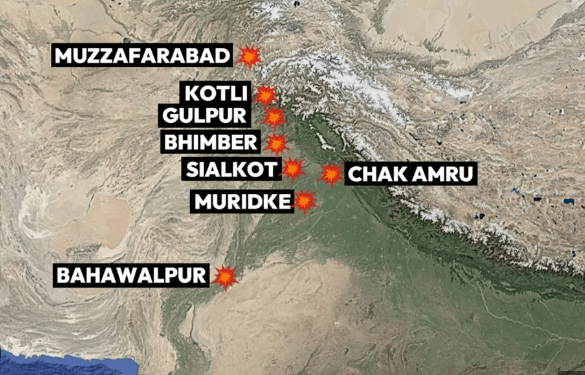“Vinay Na Manat Jaladhi Jad, Bhaye Teen Din Beet
Bole Ram Sakop Tab, Bhay Binu Hoi Na Preet.“
These timeless words from the Ramcharitmanas echoed through the room as Air Marshal A.K. Bharti, Director General of Air Operations, IAF, addressed journalists on May 12, 2025. He spoke of Lord Ram’s patience with the Sea God, and how, when persuasion failed, strength had to speak.
Because without fear, there can be no respect.
When danger arrived unannounced
In early May, as families across India mourned a brutal terror attack in Pahalgam that left countless lives shattered, India prepared a response rooted in precision, intelligence, and resolve.
Operation Sindoor was launched in the dead of night: a tri-service operation targeting nine terror camps deep within Pakistan and Pakistan-occupied Kashmir (PoK). The strikes were swift and decisive, destroying militant infrastructure without any troops crossing the Line of Control or the International Boundary.
But India knew retaliation was inevitable. As dawn approached, a new theatre of war unfolded in the skies.
An invisible swarm
Pakistan’s counter-offensive came swiftly. Hundreds of drones, loitering munitions, and rocket systems were launched almost simultaneously across India’s western front. Official reports noted 36 coordinated intrusion attempts involving nearly 400 UAVs, targeting military airfields, radar stations, and critical infrastructure from the Himalayas down to Gujarat.
Such UAV threats pose an unprecedented challenge. Nano drones and swarm attacks evade traditional radars. Without modern drone detection systems and autonomous counter-UAV systems, these threats could have crippled national critical infrastructure, compromised airfields, or endangered civilian lives.
A defence that didn’t blink
Yet, in those tense hours, India’s integrated air defence grid held firm. Combining legacy platforms like OSA-AK and Pechora missiles with upgraded drone radar detection systems and real-time electronic warfare, India deployed a multi-layered counter drone system.
At the heart of this defence lay autonomous anti-drone defence systems. Unlike traditional air defence reliant on human operators, these systems detected, tracked, and neutralised multiple drones simultaneously and autonomously. Every single hostile UAV was intercepted before it could complete its mission.

Indrajaal: Guarding the western coastline
One of the critical regions under threat during Operation Sindoor was India’s Western Naval Command. As intelligence flagged potential drone and loitering munition attacks on coastal assets and naval installations, Indrajaal’s autonomous drone defence system was deployed to safeguard this vital sector. With autonomous 360° surveillance, target classification, and countermeasure deployment, Indrajaal created an invisible protective bubble over high-value naval infrastructure.
Beyond tactical brilliance
Operation Sindoor was a demonstration of how indigenous technological superiority can change the future of warfare.
For decades, India depended heavily on imported defence systems. Today, platforms like Indrajaal’s Counter-UAS dome have proven that Indian innovation can deliver cutting-edge solutions built for our unique operational environment.
This synergy of indigenous CUAS systems, real-time integrated command networks, and traditional air defence prevented an attack of unprecedented scale from breaching Indian airspace. Not a single drone or missile reached its intended target.
The future of defence is autonomous
Chief of Defence Staff, General Anil Chauhan, recently said that drones can “shift tactical balance disproportionately,” making self-reliance in UAVs and Counter-UAS a “strategic imperative” for India. Operation Sindoor validated this perspective. From nano drones to hypersonic missiles, the battlefield is evolving, and so must our defences.
Protecting freedom, every day
At Indrajaal, we remain driven by one purpose: to build autonomous counter-UAV systems that protect our skies, secure national assets, and preserve the freedom of our citizens, every day.
Because in the end, the battle is not just against drones… but against fear itself.
And in that battle, autonomous defence is India’s strongest shield.